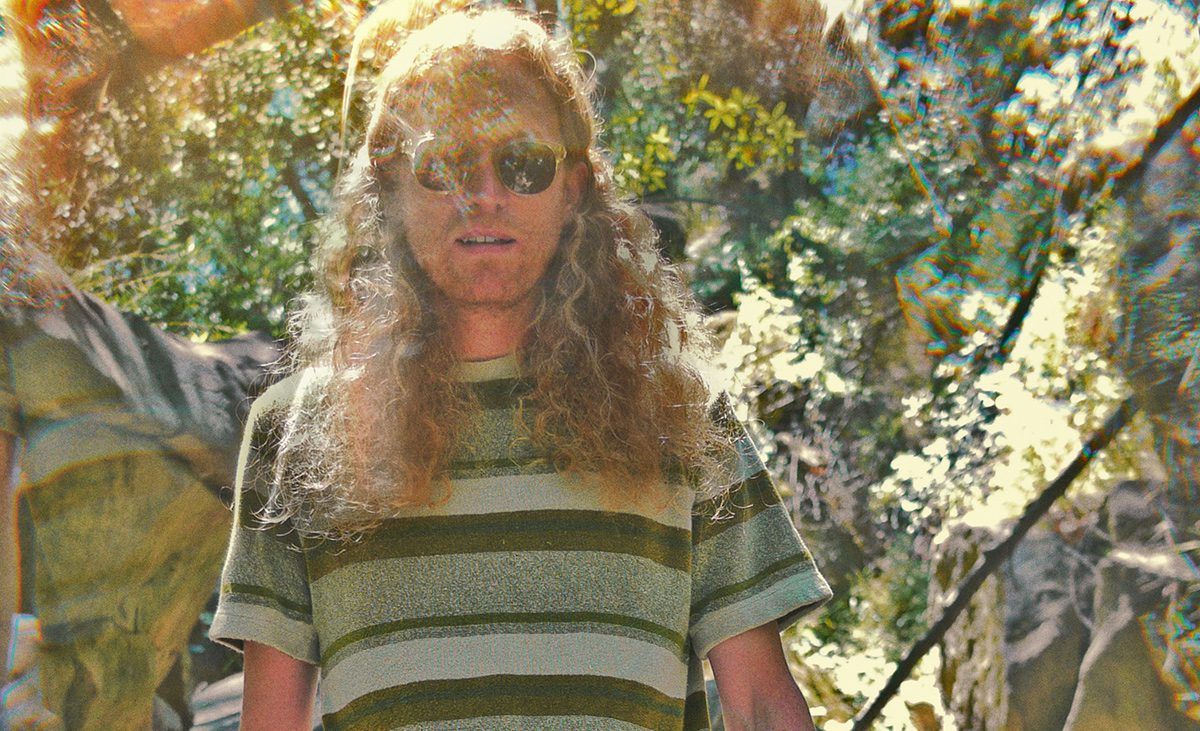Kinlaw Builds a Monument to Movement and Change with The Tipping Scale


I stumbled upon the expansive world of prolific multidisciplinary artist Kinlaw many years ago, when I promoted a show with her then-band SoftSpot at the now-shuttered Brooklyn DIY space Shea Stadium. This goes to show how deeply ingrained they have become in the NYC music and arts community; since then, the composer, choreographer, and artist (who uses both she and they pronouns) has made a name for herself with both solo performances and productions with as many as two hundred performers, gracing institutions like MoMA, Pioneer Works, National Sawdust, and more. Last Friday she released her first solo album via Bayonet Records, The Tipping Scale – a stunning, dynamic dark-pop album that nearly forces you to move despite the heavy themes it tackles.
As an artist whose primary medium is choreography, it comes as no surprise that Kinlaw’s process for writing this record was anything but orthodox, beginning with mere movement. “Years ago, working with a band, [songwriting] would start with someone having an idea and then suddenly there’d be a lot of sound, and quite a lot of noise, and then [we’d] kind of shape it down,” she explains. Their songwriting process as a solo artist happens nearly in reverse. “The entry point for a lot of these is really super quiet,” they explain. “I would start with a gesture, and let it build until a memory attached itself to it.” Different gestures intuit different sounds, associating smoother gestures with vowel sounds and those that were more “crinkled and quick” with consonants. “It’s all just a huge trip but it works for me,” she says. “It makes it so I don’t feel intimidated by the songwriting process. It makes it so that I feel like I’m making material that feels of the moment to me.”
The depth of The Tipping Scale is such that it’s difficult to articulate in words; Kinlaw refers to it as “an introspective and very strange dance party.” Wrapped in pop music that is both accessible but somehow wholly original, it combines lyrics deeply personal to Kinlaw with universal themes like loss, regret, identity, and more than anything else, change. The title itself is a metaphor for change, the idea of an ever-present slipping in and out of change, and the acceptance of it, what they describe as a constant “pull-tug” between past and present versions of ourselves. The songs are fluid, ripe with meaning never meant to sit stagnant, but rather to evolve with the listener and their environment.
For instance, Kinlaw says, “What I might have written ‘Blindspot’ about initially, is not always what it’s going to continue to be.” The video for this track was directed by her dear friend Kathleen Dycaico, who provided a mirror to reflect these ever-changing meanings. “I think working with Kathleen was a really really great thing for me, because I’m able to see that the relationships I have with other people so often parallel the ones I have with myself,” Kinlaw says. “And so even the difficulties or the grief, or the loss or the frustrations I have with things, relationships that have died, I can see them mirrored so clearly in so many things I experience on my own, with myself.”
Change is a strong theme on the album, but also configured heavily into how Kinlaw has released and promoted it; the events of the past year altered their intentions regarding The Tipping Scale. She began filming the visual component as an alternative to the live performance it was supposed to be, and the realization that a performance would not happen as soon as she had hoped. “People who were part of the developmental phases, I told them the album was a script. And that really for me, the reason I was doing it was so I could create a live show in accordance with the script,” she explains. “So for me to make a record was a really exciting thing because, like, how fabulous to have a new starting point to spend a lot of time and consideration on these songs and to allow them to have another phase, like when you do the performance.”
While I have no doubt that whatever live performance Kinlaw would have crafted (and will certainly craft, once we’re allowed live performance again) would have been powerful in its own right, I would argue that the transition to produced videos has opened up a previously unimaginable realm of possibilities for these songs. The medium provides her a vehicle to really delve into the meaning of change, the different characters she portrays and the different worlds she inhabits. Like Kinlaw says, “Music videos are great – you could do anything in three to four minutes. Whatever world you say, then that’s the way it’s gonna be.”
As a visual metaphor, hair factors strongly into these videos, changing from track to track and sometimes in the middle of the video. In “Permissions,” they crawl from a wrecked vehicle in a choppy red wig. In “Blindspot,” she and her childish counterpart begin with sleek ponytails before they take turns chopping at each other’s thick blonde braids, until Kinlaw emerges with her hair curled. In “Haircut,” her hair remains natural, but they articulate this sentiment in lyrics: “There’s a rule/That when you cut off your hair/You let the old things go.”
The strong imagery resonates with anyone who ever got a new haircut in the midst of a bad break-up, or hacked some ill-advised bangs with a pair of craft scissors on some uneventful childhood afternoon. “I think it brings to mind a lot of the symbolic ways that we try to cope as people, and it’s been interesting, since writing [‘Haircut’] and talking about it with some folks,” they say. “It’s been really interesting to see people be like, ‘Oh yeah, I totally get it,’ and they’ll tell me a story: ‘Oh I chopped off my hair that one time in like 2005, I was so upset’… I guess it’s just like identity, and an extension of, and memories. I’m also really quite stubborn with my hair, like I refuse to cut it for long stretches of time.” This last statement is thick with irony, given the artist’s dynamism and penchant for constant reinvention.
Reinvention can surely be at least partially attributed to Kinlaw’s commitment to a rigid therapy practice. I felt it reductive to ask an artist of Kinlaw’s caliber who her sonic influences were in the creation of The Tipping Scale, and I told her so when I asked, to which they unsurprisingly responded, “I can honestly say I don’t [have any].” Rather, warning that what she would say might be construed as “cheeseball,” she listed therapy as their greatest influence in the writing of this album, particularly EMDR therapy, which utilizes binaural sounds to create a pattern of eye movements and from that, spawn memories. “That, to me, is what spawns storytelling,” they say, “understanding firsthand what the crazy connection is between a body and your thoughts, and sound, and how sound influences your body.”
Pop music can be its own kind of therapy, a means of transporting oneself across energy levels and moods, something anyone who has ever turned on Top 40 radio to dance away the blues knows well. Describing pop music as a “raft boat,” Kinlaw explains, “I purposefully chose pop music because I wanted to feel like I could move, dance, party forward into the next chapter of my life. The juxtaposition of having these confessional songs paired with pop sounds was a really strange space that I wanted to learn more about.” But did the process of setting traumatic memories to music designed to lift the mood provide therapeutic relief for the artist? “I don’t know, but it’s like I wanted to float these songs on the lens of pop because I hope it will make me feel better,” they say. “Talk to me in a year and I’ll tell you if this worked out for me or not.”
As far as what’s next for Kinlaw, more videos are on the horizon. For someone with such sweeping vision, the creative possibilities are endless and the only limitations are financial. A recipient of the Audiofemme Agenda Grant, Kinlaw put some of the money toward filming their videos – and in doing so, employed many struggling artists and musicians who are out of work due to the pandemic. “That’s what it’s been about for me since the beginning. My friends are the most talented people on Earth. They’re such mindful and smart artists, so it’s really easy for me to get a team together who I love,” Kinlaw says. “I’m hoping I can figure out how to finish the rest of this, because I do intend on having more videos.” Whatever worlds Kinlaw imagines for next, there’s certainly no doubting her determination; as she sings in “Blindspot,” “I get what I want/Cause I know that I deserve it.”
Follow Kinlaw on Instagram and Facebook for ongoing updates.




